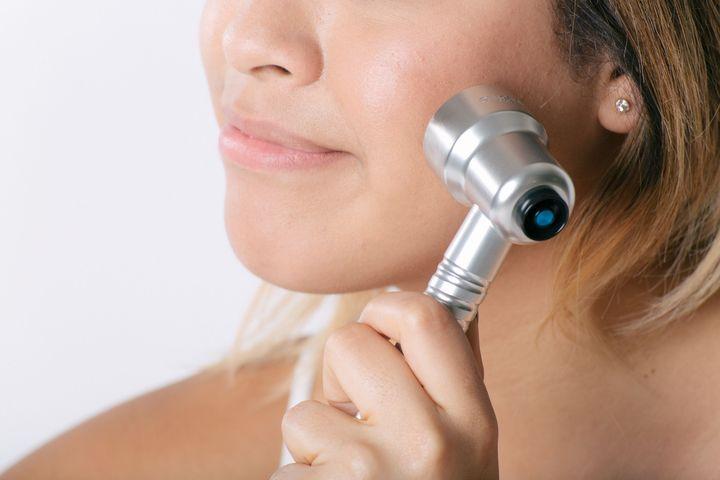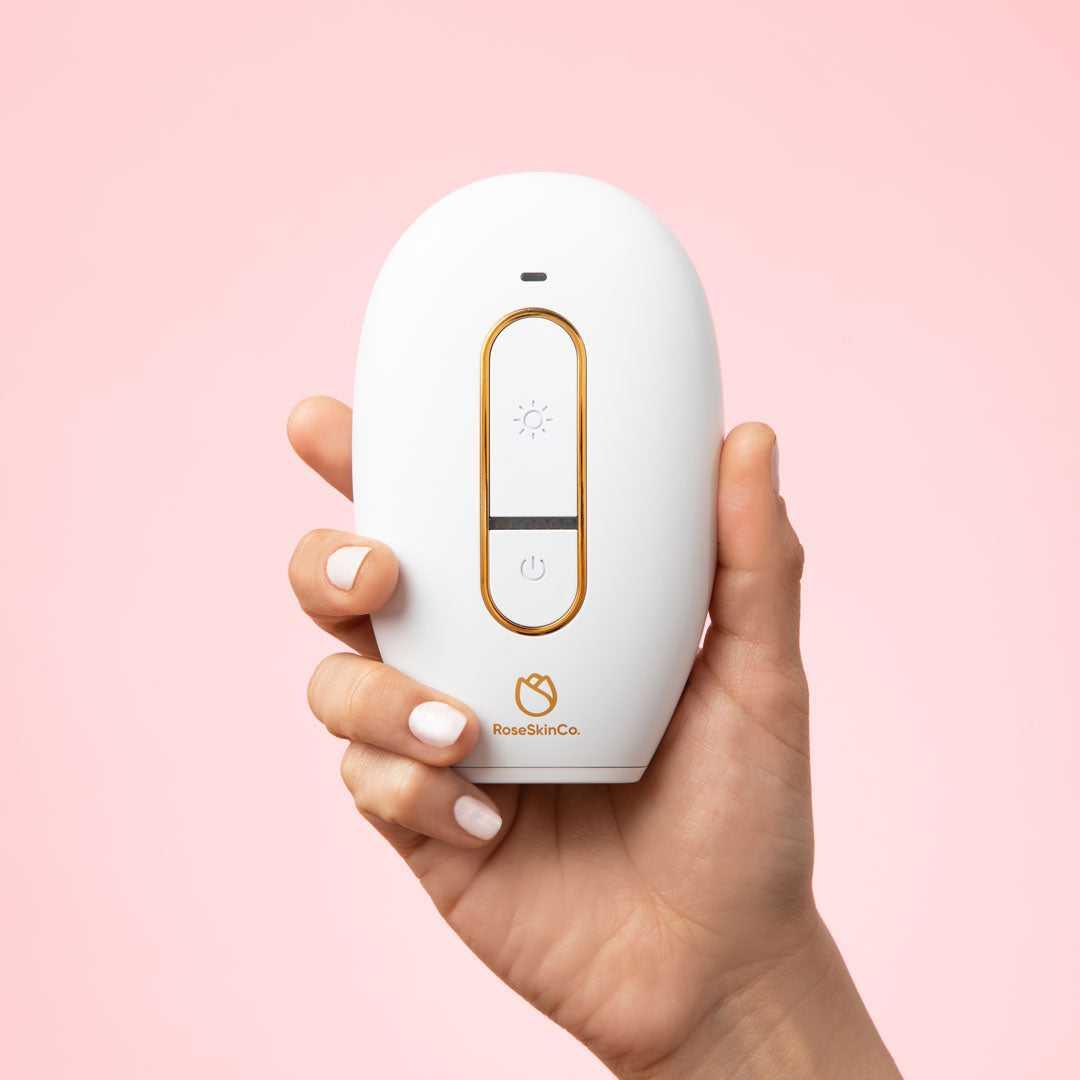In the era of instant makeovers and DIY beauty hacks, the promise of at-home laser treatments has never shone brighter. Picture this: a sleek, futuristic device, nestled snugly in your palm, ready to banish unwanted hair, zap acne scars into oblivion, or even turn back the clock on those pesky fine lines. All from the comfort of your own home! But before you roll out the red carpet for your new best friend, ‘Zap It Away: The True Cost of At-Home Laser Treatments’ takes you behind the glitzy facade. Join us on a journey where we dive deep into the allure, the reality, and the implications of this high-tech beauty phenomenon. Grab a cozy seat, because this is a story you won’t want to miss. Ready, set, zap!
Understanding the Buzz: What Are At-Home Laser Treatments?
If you’ve been scrolling through social feeds or chatting with friends about skincare, chances are you’ve heard the buzz about at-home laser treatments. Once exclusive to dermatologists’ offices and high-end salons, these innovative devices are now accessible from the comfort of your own bathroom. But what exactly are we talking about here? Imagine wielding a mini-lightsaber designed to zap away unwanted blemishes, wrinkles, and even hair – all in the name of maintaining that polished look.
At-home laser treatments range from **hair removal** to **anti-aging** and **skin rejuvenation**. These nifty gadgets often come in sleek and compact designs that make them super user-friendly. Some popular features include:
- **Adjustable intensity settings** to tailor the treatment to your skin type.
- **Ergonomic designs** for easy handling and precision targeting.
- **Safety features** like skin sensors and cooling technology.
A typical session involves using the hand-held device to direct light or laser energy onto the target area. The energy penetrates the skin to act on different layers, stimulating collagen production, addressing discoloration, or destroying hair follicles. The science might sound high-tech, but many devices come with step-by-step guides or apps to simplify the process. Here’s a quick comparison of common types of at-home lasers:
| Type | Primary Use | Key Features |
|---|---|---|
| IPL (Intense Pulsed Light) | Hair Removal | Wide treatment window, multiple light settings |
| Fractional Lasers | Anti-Aging | Enhances skin texture, reduces wrinkles |
| LED Devices | Acne Treatment | Different light spectrums for various skin issues |
From their sleek designs to in-built guides, at-home laser treatments are becoming a game-changer in the DIY beauty world. Investing in one could mean fewer trips to the dermatologist and more control over your beauty routine, all while lounging in your pajamas. Ready to zap it away? Just remember to do a patch test and follow all safety guidelines to keep your skin in its best shape!

The Pros and Cons: Weighing Your Options Before You Buy
When considering the leap into at-home laser treatments, it’s vital to weigh both the benefits and drawbacks. Despite the allure of a DIY approach, evaluating all aspects will help you make an informed decision.
- Pros: At-home devices offer a considerable cost-saving compared to professional treatments. Once you purchase the device, you can perform an almost unlimited number of sessions without additional expenses.
- Convenience: No need to drive to appointments, wait in a lobby, or adjust your schedule for a specialist’s availability.
- Privacy: You can treat sensitive areas without feeling self-conscious in a professional setting.
- Control: You’re in charge of your treatment pace and can adjust settings to match your comfort levels.
- Cons: Initial costs for the equipment can be substantial, and quality devices may not be cheap.
- Learning Curve: There is a potential for misuse if you don’t thoroughly understand the device instructions, which could lead to ineffective treatments or even skin damage.
- Results vs. Expectations: At-home devices are typically less powerful than professional lasers, leading to potentially slower results.
- Skin Suitability: Not all skin types and tones react the same way to at-home lasers, which could limit effectiveness.
| Aspect | At-Home | Professional |
|---|---|---|
| Cost | Lower after initial purchase | Higher per session |
| Results | Varies by device | More consistent and quicker |
| Convenience | High | Moderate |
| Safety | Requires knowledge | Supervised by professionals |

Safety First: Protecting Your Skin with the Right Techniques
Imagine you’re all set to embrace the world of at-home laser treatments. You have the device, the schedule, and the excitement. But wait—don’t forget the most crucial element: ensuring your skin’s safety. Get ready to dive into some insider tips on how to keep your skin protected while harnessing the power of at-home lasers.
The Patch Test: Never, and I mean never skip the patch test. This simple step can save your skin from unexpected reactions. Apply the laser on a small area and wait 24-48 hours to ensure there are no adverse effects. This trial run helps you understand how your skin reacts to the treatment, letting you proceed with confidence.
- Hydrate Like a Pro: Keep your skin hydrated before and after your sessions. Use moisturizing creams or lotions to maintain skin elasticity and minimize the risk of irritation.
- Sun Protection: The sun is your skin’s biggest enemy post-treatment. Opt for broad-spectrum SPF 30 or higher to shield your skin from harmful UV rays. UV protection will prevent hyperpigmentation and other sun-induced damage.
Consistency is also key when it comes to preparation and after-care. Consistently following the directions provided with your laser device can greatly minimize risks. Misuse might lead to burns, scarring, or heightened sensitivity. Below is a quick reference table to keep your routine on track:
| Step | What to Do | Frequency |
|---|---|---|
| Patch Test | Small area application | Once before first full use |
| Hydration | Apply moisturizing cream | Daily, before and after treatment |
| Sun Protection | Use SPF 30+ | Daily, especially after treatment |

Cost Crunch: Evaluating the Financial Investment and Savings
Investing in an at-home laser treatment device initially sounds like a splurge, but let’s crunch the numbers. Upfront, these gadgets typically range from **$200 to $700**. Compare this to professional treatments that can cost **$100 to $500 per session**, and you can already see potential savings. On average, achieving the desired results professionally may require **6 to 8 sessions**, making the overall cost **$600 to $4,000**. Clearly, your pocketbook feels lighter just thinking about it.
Beyond the upfront costs, one must consider the long-term financial impact. Professional treatments often come with maintenance sessions that add up over years. With an at-home device, you have the freedom to touch-up as needed, without any additional expenses. Think about:
- **Maintenance Freedom:** No scheduled appointments.
- **Zero Travel Costs:** Save on time and gas.
- **Control Over Usage:** Use it whenever it’s most convenient for you.
To dive deeper, consider the cost-effectiveness of different types of at-home devices. For instance, diode lasers, commonly found in many consumer-grade devices, have a lower cost per session but might take longer to show results. On the other hand, devices using IPL (Intense Pulsed Light) technology might show faster results but often come with a higher initial investment. Here’s a quick comparison:
| Device Type | Cost per Session | Initial Investment |
|---|---|---|
| Diode Laser | $5 – $7 | $200 - $350 |
| IPL | $7 – $10 | $350 - $700 |
Furthermore, there’s the often overlooked cost of consumables. Some devices might require replacement cartridges, gels, or specialized cleaning tools. Be sure to factor in these additional expenses when considering your budget. A sound approach is to compare not only the sticker price but also the lifetime costs of upkeep. As with most investments, doing a little homework upfront can arm you with the knowledge to make a financially sound decision. All in all, while the initial price tag on an at-home laser treatment device may seem high, the savings over time can be profound.

Maximizing Effectiveness: Tips for Getting the Best Results
When considering at-home laser treatments, effectiveness is key to achieving desired results. Here are some tried-and-true tips to help you get the most out of your at-home laser sessions:
- **Consistency is Critical**: Consistent use of your at-home laser device is crucial. Make a schedule and stick to it. Skipping sessions can significantly slow down your progress.
- **Prep Your Skin Properly**: Always start with clean, dry skin. Remove any makeup, oils, or lotions that could interfere with the laser’s effectiveness. Shaving the treatment area beforehand can also help the laser target hair follicles more directly.
Understanding your device’s settings can further enhance results. Most devices come with varying intensity levels, perfect for fine-tuning your treatment to your skin type and comfort level. Start with a **lower intensity** if you’re new or have sensitive skin; you can gradually increase it as you become more accustomed to the sensation.
Pair your at-home laser treatments with a good skincare routine. **Moisturize** the treated area to keep your skin hydrated and healthy. Products with ingredients like aloe vera or hyaluronic acid can be particularly soothing after a laser session. Additionally, applying **sunblock** is imperative to protect your skin from UV rays, as treated skin can be more susceptible to sun damage.
| Prep Step | Reason |
|---|---|
| Clean Skin | Removes barriers for laser penetration |
| Shaving | Targets hair follicles more effectively |
| Avoid Sunlight | Prevents sunburn and skin irritation |
Q&A
Article Title: “Zap It Away: The True Cost of At-Home Laser Treatments”
Q&A Segment
Q: Hi there! I’m curious, what exactly are at-home laser treatments?
A: Great question! At-home laser treatments are nifty devices designed to help you tackle skincare issues like hair removal, acne scars, and even fine lines and wrinkles from the comfort of your own home. These gadgets use laser technology to target specific issues, offering a convenient alternative to professional treatments.
Q: Wow, that sounds convenient. But are they as effective as professional treatments?
A: That’s the million-dollar question! While at-home devices can be effective for some people, they’re generally less powerful than what you’d find in a professional setting. This means you might need more sessions to see results, and the results might not be as dramatic. It’s a bit like comparing a smoothie you make at home to one from your favorite juice bar—both good, but maybe not quite the same!
Q: Got it. Are there any hidden costs I should be aware of?
A: Absolutely, it’s important to consider the full picture. First off, the initial investment can be pretty hefty, with devices often costing a few hundred dollars. Then there’s the cost of maintaining the device, like replacement cartridges or bulbs. And let’s not forget the occasional accessory or product that might be recommended for optimal results. It all adds up, so it’s wise to budget accordingly.
Q: Do these treatments come with any risks or side effects?
A: Yes, like any skincare treatment, there are potential side effects. Some people might experience redness, swelling, or skin irritation, especially if they have sensitive skin. And because these devices require careful handling, there’s always a risk of burns or hyperpigmentation if not used correctly. Always follow the instructions carefully and maybe do a patch test first to see how your skin reacts.
Q: Are there any tips for getting the best results from at-home laser treatments?
A: Absolutely! Consistency is key—stick to the treatment schedule recommended by the manufacturer. Make sure your skin is clean and dry before each session to avoid irritation. Also, protecting your skin from the sun afterward is crucial, as laser-treated skin can be more sensitive to UV rays. And lastly, patience is your friend; it might take several weeks to see noticeable results.
Q: This all sounds pretty useful. Is there anyone who shouldn’t use at-home laser treatments?
A: Yes, these devices aren’t suited for everyone. For example, certain skin types, like very dark or very light skin, might not be ideal candidates, depending on the technology used. People with certain medical conditions, like those involving photosensitivity, should avoid these treatments as well. It’s always best to consult with a dermatologist before starting any new skincare regimen.
Q: Thanks for all the info! Any final thoughts?
A: You’re welcome! At-home laser treatments can be a fantastic addition to your skincare toolkit if used properly and safely. They offer convenience and can save you trips to the dermatologist. Just be sure to do your research, follow instructions to the letter, and manage your expectations. Happy zapping!
Got more questions? Don’t hesitate—reach out and zap us an email anytime!
Key Takeaways
As our journey through the intricate world of at-home laser treatments comes to a close, it’s clear that while the allure of zapping away imperfections in the comfort of your own home is undeniably tempting, it’s not without its complexities. We’ve explored the magic behind the beams, the investment required, and the spectrum of outcomes users might experience.
In this era where convenience vies with caution, arming yourself with knowledge is your most potent defense. Knowing the true cost—financially, physically, and emotionally—ensures that your decision is as flawless as the skin you aspire to reveal.
So, as you stand on the brink of this illuminating adventure, remember: every zap should be a step towards confidence and well-being. Here’s to making informed choices and embracing your unique beauty, one laser pulse at a time. Until our next expedition into the realm of beauty and science, stay savvy and radiant!






